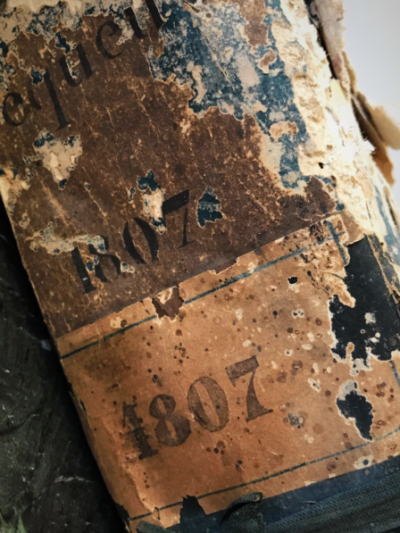When I saw the book I knew I had to have it. When the dealer, who I know, told me the price I literally said out loud in English, "Oh, come on!" He replied, "There are at least 500 pages, and you know how much a page cost, would you prefer me to take it apart and sell it by page."
Taking it a part would be a crime in my brocante book of rules. I remember the first time I went to Marburger Antique fair at Round Top in Texas there were American dealers who had bought Aubusson tapestries and were CUTTING them up to make pillows! I had to contain my disgust, it bothered me so much. When I questioned them why, they replied they could get more money cutting it up into pillows then selling it as one piece, "Nobody will pay the price for an entire piece."
The pages are made from cotton wad. There is only one place I know where paper is made from cotton wad, the traditional way, in France. The company Antoinette Poisson does so using an old mile for their hand painted wall papers and such.
The cover of the book seems to highlight the expression:
"You cannot judge a book by its cover"
as the cover is barely hanging on.
But, that to me makes it more intriguing.
Without counting the pages, I can see that there are at least a couple hundred. The cover says 1807, but some of the documents are older than that. The documents are legal ones, transactions of one thing or another, though it is the script, the texture, the age, the beauty that I admire, not the reason of its being.
The book came home with me. I am admiring it, and put it in my brocante shop to sell. It justifies my reason for buying it: I saved it from being taken a part. If it sells it will go to a good place and until then I am able to enjoy it.
What do you save?




Leave a Reply